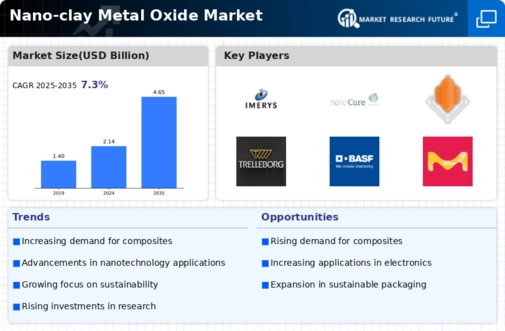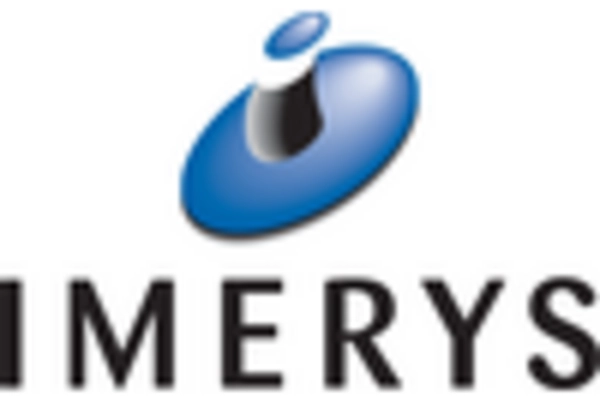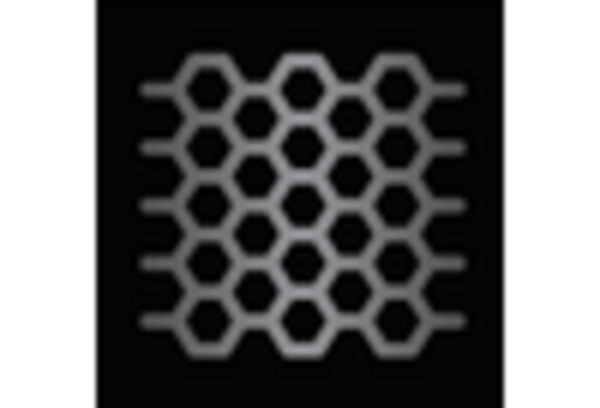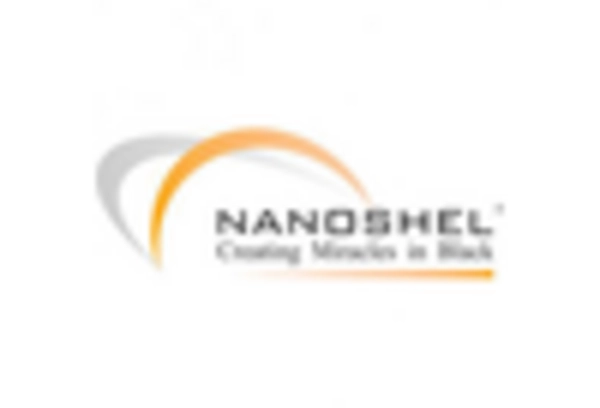Advancements in Nanotechnology
Technological advancements in nanotechnology are likely to propel the Nano-clay Metal Oxide Market forward. Innovations in the synthesis and application of nano-clay metal oxides are enhancing their properties, making them more effective in various applications, including electronics, coatings, and biomedical fields. For instance, the ability to manipulate the size and surface characteristics of these materials can lead to improved performance in catalysts and sensors. The market is expected to witness a compound annual growth rate (CAGR) of approximately 15% over the next five years, as industries increasingly adopt these advanced materials to enhance product functionality and efficiency.
Growing Environmental Concerns
The rising awareness of environmental issues is driving the Nano-clay Metal Oxide Market as industries seek sustainable alternatives. The incorporation of nano-clay metal oxides in products can enhance biodegradability and reduce the environmental impact of materials. For example, in the packaging sector, these materials are being utilized to create eco-friendly solutions that maintain product integrity while minimizing waste. The market is responding to this shift, with an estimated increase in demand for sustainable materials projected to reach 20% by 2026. This trend underscores the importance of integrating environmentally friendly practices into manufacturing processes.
Rising Demand for Lightweight Materials
The increasing demand for lightweight materials across various industries appears to be a significant driver for the Nano-clay Metal Oxide Market. As manufacturers seek to enhance fuel efficiency and reduce emissions, the incorporation of nano-clay metal oxides in composites and polymers is becoming more prevalent. This trend is particularly evident in the automotive and aerospace sectors, where weight reduction is critical. Reports indicate that the use of nano-clay metal oxides can lead to a reduction in weight by up to 30%, thereby improving performance and sustainability. Consequently, the market for these materials is projected to grow, driven by the need for innovative solutions that meet stringent environmental regulations.
Regulatory Support for Advanced Materials
Regulatory frameworks that support the use of advanced materials are influencing the Nano-clay Metal Oxide Market positively. Governments are increasingly recognizing the potential of nano-clay metal oxides in enhancing product performance while adhering to safety and environmental standards. This regulatory support is encouraging manufacturers to adopt these materials in their production processes. For instance, initiatives aimed at promoting the use of nanomaterials in construction and automotive applications are expected to drive market growth. The anticipated regulatory changes could lead to a market expansion of approximately 10% annually, as industries align with new standards and practices.
Increased Investment in Research and Development
Investment in research and development (R&D) is a crucial driver for the Nano-clay Metal Oxide Market. As companies strive to innovate and improve the performance of their products, R&D initiatives are focusing on the development of new applications for nano-clay metal oxides. This investment is fostering collaborations between academic institutions and industry players, leading to breakthroughs in material science. The market is witnessing a surge in funding, with estimates suggesting that R&D expenditures in this sector could exceed $1 billion by 2027. Such financial commitment is likely to accelerate the commercialization of advanced nano-clay metal oxide products.


















Leave a Comment